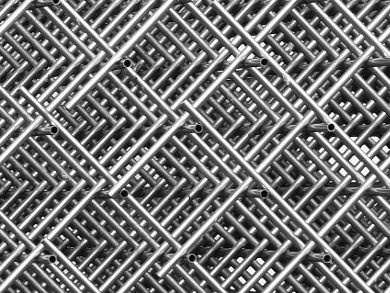Superhard materials such as diamond are useful in many industrial applications. They are defined by hardness values larger than 40 GPa. One such material is rhenium diboride (ReB2), which contains corrugated layers of covalently bonded boron and reaches hardness values of up to 40.5 GPa. Tungsten boride, in contrast, contains both corrugated and planar boron layers and is not superhard.
Richard B. Kaner, University of California, Los Angeles, USA, and colleagues have synthesized solid solutions of tungsten in rhenium diboride with up to 48 atom % tungsten. The team combined powders of rhenium, tungsten, and amorphous boron, pressed them into pellets, and melted them in an electric-arc furnace. The samples were characterized using powder X-ray diffraction and neutron powder diffraction. The a– and c-axes of the crystals are expanded by incorporation of tungsten into the ReB2 structure and increase linearly with rising tungsten content.
All of the synthesized tungsten-containing solid solutions have hardness values greater than 40 GPa and can thus be classified as superhard. According to the researchers, the results indicate that further studies of compounds with a ReB2 structure could help to find additional superhard materials.
- Superhard Rhenium/Tungsten Diboride Solid Solutions,
Andrew T. Lech, Christopher L. Turner, Jialin Lei, Reza Mohammadi, Sarah H. Tolbert, Richard B. Kaner,
J. Am. Chem. Soc. 2016.
DOI: 10.1021/jacs.6b08616




